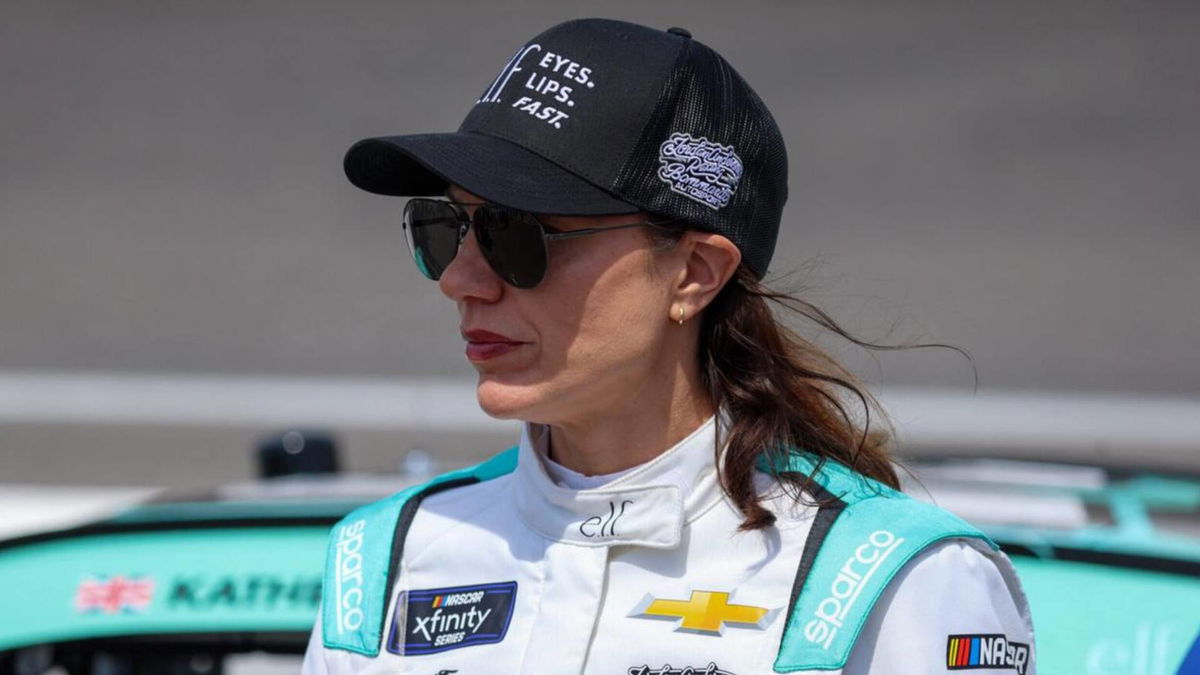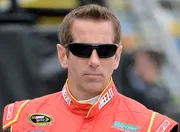

Danica Patrick’s landmark ascent in NASCAR began with the electricity of the IndyCar success, finishing 4th in her Indy500 debut in 2005, then 3rd in 2009, cementing her reputation as an elite open-wheel talent. That momentum carried her to NASCAR, where her early years included learning curves in ARCA and the Nationwide Series, punctuated by a record-breaking 4th at Las Vegas in 2011, the best finish by a woman at the time. She took the bold step into Cup full-time in 2013 with Stewart-Haas Racing. Following the trail blazed by Patrick, Katherine Legge charted her own path from global motorsports to NASCAR.
Watch What’s Trending Now!
A British driver with roots in Formula Atlantic, she became the first woman to win a major open-wheel race in North America in 2005. Legge amassed accolades at the Indy500, setting the fastest qualifying speed ever by a woman in 2023, and a varied resume across endurance, IMSA, and IndyCar racing. “I actually race for the same team as Danica, so we’ve sort of judged myself against her all season,” Legge once said. “It’s difficult. She’s been doing this series since the beginning of the year and I haven’t. So, you know, I’m going to judge myself against her just as much as I’m going to judge myself against everybody else. There’s nothing special about her or me. We’re just drivers.” But as Legge has been branded as the second Danica Patrick, the numbers quietly tell a different story.
ADVERTISEMENT
Why Legge’s first five Cup starts outshine those of NASCAR’s biggest names
Recently, Legge made her way through the NASCAR Cup Series behind the wheel of the #78 Live Fast Motorsports Chevrolet. At 44 years of age, she became the first woman since Danica Patrick in 2018 to start a Cup race, qualifying for Phoenix Raceway in March, and though she crashed out, it signaled her arrival in stock car racing. She followed that with a 32nd-place finish in Mexico City after the cockpit heat melted her shoe. And then came four additional starts at Sonoma, Chicago Street Course, and Indianapolis. She logged five Cup races with an impressive average finish of 25.8 and an average starting position of 36.4, plus two top-20 finishes and just one DNF.
Her results stack up even more starkly when placed alongside the 16 drivers whose first-five start averages ranked the worst, and among them are iconic champions and multiple race winners. This “worst-rookie” list includes names like Kyle Busch (33.6 avg), Joey Logano (36.0), Chase Elliott (26.2), and Austin Dillon (27.0), all of whom eventually rose to championship greatness. Every driver in that group posted an average finish worse than Legge’s 25.8, proving that struggling early is far from a career death sentence, even for future champions.
I calculated the Average Finish of every full-time Cup driver in their first 5 Cup starts and attached the 16 worst. The list contains 5 Champions, 7 Championship Four drivers and 12 winners. They all have something in common: their average was worse than Katherine Legge’s (25.8) pic.twitter.com/Il3ezt5yLi
— Daniel Céspedes (@_DanielCespedes) July 28, 2025
ADVERTISEMENT
Yet, the surprise is that Legge’s rookie numbers actually outperform a handful of NASCAR’s most well-known converts from open-wheel racing. Patrick, whose crossover in 2012 generated seismic media coverage, had a rough Cup start. Her first ten races in 2012 averaged 28.3, and once signed for a full-time season in 2013 with SHR, her average fell to around 26.1, ultimately finishing the season at a 30.1 average finish with only one Top-10. “Well, I got here by determination and believing I could. It’s that simple. And then I would say that to open it up to something that your question wasn’t exactly — I would say once you get to this level, I think we’re all talented, so then it depends on so many other circumstances, which is why you see a driver all of a sudden emerge and maybe submerge every now and again, depending on circumstances,” Patrick explained her simple blueprint behind her career.
Legge’s road-course pedigree shone through, too. Her 19th-place finish on the Chicago Street Course marked the first top-20 finish by a woman in Cup since Patrick ran 17th at Texas in November 2017. That came after Phoenix (30th) and Mexico City (32nd), and was followed by Sonoma (31st) and Indianapolis (17th), showing real adaptability across vastly different track types. Meanwhile, Legge’s broader motorsport background has lent credibility to her stock-car endeavor beyond just novelty.
ADVERTISEMENT
When compared side by side, Patrick and Legge’s early Cup starts illustrate contrasting arcs. Patrick burst in with enormous hype, winning the 2013 Daytona 500 pole. She led a lap there and finished 8th in the race, drawing massive crowds, yet her steady numbers never matched her media buzz, enduring years with average finishes in the high-20s to low-30s. Legge, by contrast, quietly delivered a slightly stronger early average, including top-20 showings, across the same five-race window. While neither has posted podiums yet, Legge’s pace in her Cup freshman five already exceeds that of Danica’s early efforts, and in hindsight, of many future champions.
Top Stories
NTSB Appeals for Greg Biffle’s Wife’s Alleged In-Flight Text Messages as Crash Investigation Heats Up

Donald Trump Issues Moving Message of Condolence for NASCAR’s Greg Biffle & Family During North Carolina Address

Another Almost Fatal Disaster Surfaces From Statesville Airport Amidst Ongoing Greg Biffle’s Crash Investigation

Air Safety Investigator Probes Possible Co-Pilot Role Amid Greg Biffle’s Fatal Plane Crash Investigation

Greg Biffle Plane Tragedy: What Might Have Caused the Crash That Killed the NASCAR Champ and His Family

The formula for Legge’s NASCAR ascent
To truly rise in NASCAR’s elite ranks, Katherine Legge will have to consistently translate her vast open-wheel and sports-car experience into stock-car precision, especially on ovals. As she noted after her Phoenix Cup Series debut, “Going out there, first time, having never driven one of these before… on an oval that I have very little experience with. I have done what two oval races in a stock car now? So it’s a lot of good experience honestly.” Rather than chasing results immediately, she is prioritizing finishing races and minimizing mistakes: “Finishing all of the laps… minimizing mistakes,” she told SiriusXM NASCAR Radio. Regular laps, clean runs, and learning from veterans lap after lap will build the consistency and traits needed to move her from back marker to contender.
ADVERTISEMENT
Legge also draws inspiration from drivers like Kyle Larson, whom she calls a hero for his versatility, “I saw him drive at the Chili Bowl, and I’m like, ‘You are my hero.’… If you have his level of natural ability and you work at it, then you’re special.” She admires how Larson switched between disciplines and succeeds even within NASCAR, IndyCar, and dirt racing, seeing his career as a model for what is possible. On top of that, her long-time friendships with drivers like AJ Allmendinger gave her a reference point for how to navigate stock brands and team culture in NASCAR.
Finally, mentorship and track-specific mastery are key. She strongly values advice from peers on race strategy and learning curves: “It was something that I felt incredibly passionate about doing. I have so much fun doing it and am so motivated. I’m working hard at it. I really want to make this home.” That humility, paired with her diverse background and early success on road courses, suggests that, with more seat time and smart coaching, she can close the gap to mid-pack Cup cars. Building relationships, absorbing feedback from veterans, and progressively adapting to high-speed drafts and pit stop rhythm will be the ingredients that turn her promising starts into results that command attention.
ADVERTISEMENT
ADVERTISEMENT
ADVERTISEMENT
ADVERTISEMENT

